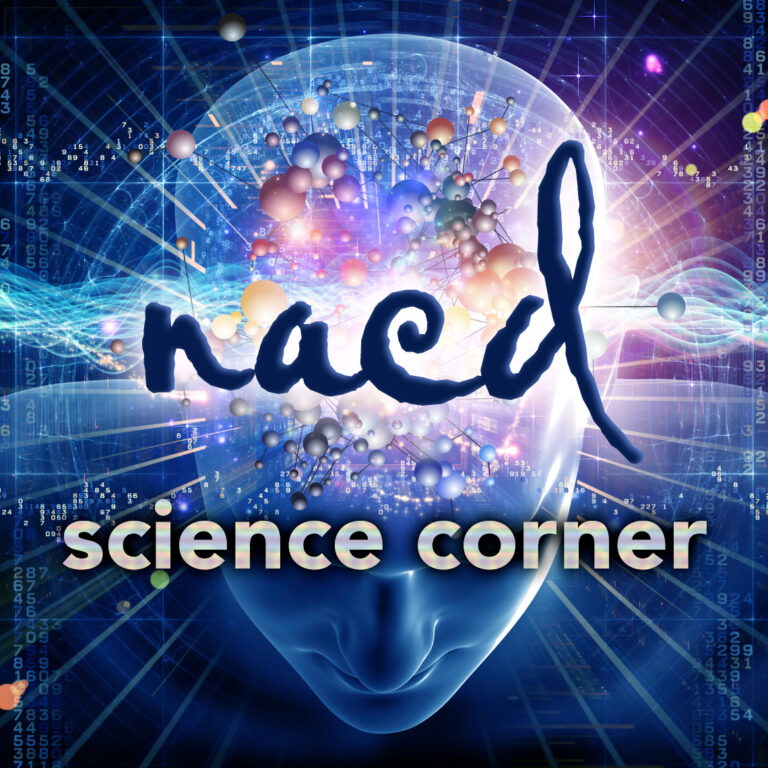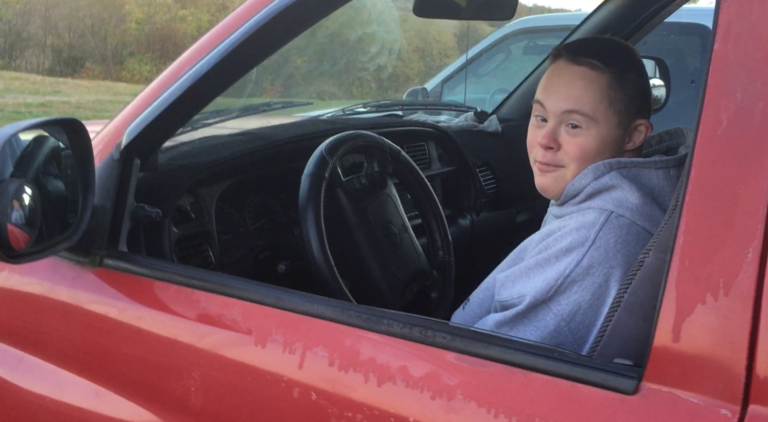Down Syndrome Perspectives: A Message to Parents of Down Syndrome Children
by Robert J. Doman, Jr.
 In 1972 I sent my first Down Syndrome child off to her first day of school, in regular class, in a “normal” public school with “normal” expectations, and no special services. Linda was entering first grade, having spent two years with me at the George Crother’s Memorial School. Linda entered 1st. Grade at the head of her class. I was the Clinical Director of United Cerebral Palsy in Delaware County, Pennsylvania and of the George Crother’s Memorial School, which was operated by the organization. Linda was one of the firsts of thousands of children with Down Syndrome with whom I have worked over the past thirty years.
In 1972 I sent my first Down Syndrome child off to her first day of school, in regular class, in a “normal” public school with “normal” expectations, and no special services. Linda was entering first grade, having spent two years with me at the George Crother’s Memorial School. Linda entered 1st. Grade at the head of her class. I was the Clinical Director of United Cerebral Palsy in Delaware County, Pennsylvania and of the George Crother’s Memorial School, which was operated by the organization. Linda was one of the firsts of thousands of children with Down Syndrome with whom I have worked over the past thirty years.
Back in 1972 it was not unusual for a DS child to attend normal school, it was unheard of. As a matter of fact not many DS children attended school at all. This was back before the establishment of the Right to Education Laws. Pennsylvania was the first state to establish a Right to Education law, and provided the model for the federal law that was to follow. Prior to the establishment of the Right to Education Law school attendance was based upon IQ scores. If the child’s IQ tested in the Educable range the child was permitted to attend special education classes. If they tested below that level, in the Trainable range, it was determined that they would not benefit from an education, and were denied services. Organizations such as the UCP organization of which I was a part and which used private funding were the only places that provided services for these children. Back in the early 70’s I received some rebukes from the State for educating trainable children, and for providing too much therapy.
In the 1970’s the perspective of the educational and medical community on DS was based almost entirely on individuals with DS who had spent their lives in institutions. There were virtually no DS individuals who had received any educational opportunities whatsoever. It was at this time that I was in a Master’s program in a prominent college that was said to have the best special education/educational psychology program in the country. It was also at this time that I walked out of the program when the head of the department announced her dream. Her dream was to create a special educational program based on what she called the “European Model”. The European Model involved training the DS children to sweep the streets with brooms- that was the end of my participation in that Masters program.
The educational and therapeutic opportunities being afforded children with DS were based on what the world thought the children were capable of. The world felt that they were not capable of anything. This obviously led to a self-fulfilling prophecy. Zero opportunities – zero results. The past thirty years have been spent trying to determine what really constitutes an opportunity for children with Down Syndrome.
Today the opportunities being afforded children with DS have changed rather dramatically nevertheless we still have a long way to go. We are still engaged in the process of determining what constitutes a meaningful opportunity. At this point we have identified some factors which we feel are critical to achieving that goal. The critical opportunities that we have identified include:
- An opportunity to receive nutritional intervention.
- An opportunity to be perceived as a unique individual with unlimited potential.
- An opportunity to receive an individualized developmental neuro-education program.
- An opportunity to grow, develop, and be educated in a “normal,” loving, nurturing environment.
- An opportunity to receive nutritional intervention.
In the early 70’s I was fortunate to meet and then work in association with Henry Turkel M.D. Dr. Turkel was a brilliant man who had spent his career learning about and developing nutrition intervention for children with Down Syndrome. Dr. Turkel’s U-Series helped produce significant change in children from around the world. In the intervening years I have had the chance to observe thousands of children pre and post nutritional intervention, first with the U-Series and more recently with the MSB and TNI’s Nutrivene D programs.
The MSB and Nutrivene D programs are the latest development in meeting the specific nutritional needs of DS children, and of helping to negate the effects of the chromosomal abnormalities. Strengthening the immune system, maintaining good general health, and negating the effects of the chromosomal abnormality provides the foundation for all physiological and neurological development. These programs should be perceived as providing the foundation upon which education and development are built.
An opportunity to be perceived as a unique individual with unlimited potential: Today as in the past limited perceptions of the potentials of our DS children have limited their opportunities. During my career educational opportunities have undergone transformations. It has moved from denying DS children any access to the educational system, to admitting them into very restricted special education classes to inclusion into “regular” classes. As the saying goes, “We’ve come a long way Baby”.
But, the reality is that we still have a long way left to go. Many DS children have the potential to achieve “normal” academic function. Unfortunately this potential is almost impossible to achieve in a typical special education program or in an inclusion situation. The problem is again one of perception. The goals established for our DS children are typically low- much too low. The goals, however, are reflections of the opportunities being provided. The reality is that most of our children need not only an individualized program they need an individual program. They need a 1:1 educational opportunity, utilizing a program designed to fit the individual child. Being with “normal” children is good, but in itself is absolutely not enough. The inclusion model does not expect “normal” educational development; it only provides the aura of normal educational development. Having worked with thousands of DS children from around the world for thirty years I have perhaps a better perspective of what “is” than most people in the field, I also understand how easy it is to accept anything that looks “normal”. But, the reality is that our DS children are unique, they do have specific needs which are determined by their individual strengths and inefficiencies, and that they do have unlimited potential. The potential of our DS children could be likened to a superior athlete’s potential to compete in the Olympics. Like that athlete, the DS child’s potential is only going to be achieved through very intense, very specific training, and will require an exceptional commitment. The reality is that most athletes are not going to reach the Olympics, nor are most DS children going to achieve “normal” function. But, where most of our children ultimately function is going to be a reflection not of their innate potential, but of the opportunities which we provide for them, and commitment to the realization of potential.
An opportunity to receive an individualized developmental neuro-educational program: Today a developmental opportunity for a DS baby is typically defined as enrollment in an early intervention program. This supplies a special education teacher once a week or every two weeks for an hour, physical therapy once a week for a half an hour and a like amount of speech and occupational therapy. Many parents feel very fortunate to receive so much help. Most of our families at NACD however perceive this level of intervention as sorely lacking in both quantity and quality. The development of any child is determined by the amount of specific appropriate input, which the child receives. This is true whether we are talking about a “normal” child or a DS child. When we are dealing with a child with a developmental problem such as Down Syndrome their specific needs are such they require an inordinate amount of specific input if they are going to achieve anything close to their potentials. At NACD we have been designing home based programs for DS children for twenty years. We have been fortunate to work with the “creme de la creme” of parents—often the brightest, but not necessarily so, often well educate but not necessarily so, often with a lot of time to spend with their child, but not necessarily so—but universally the most dedicated. Our families have understood that if their child is to be given a real opportunity to achieve their potential that they the parents were going to have to assume the primary responsibility for that development and education. Traditional treatment has two major flaws; the first is that typically so little of it is done that the feedback of the therapists is so limited that they do not have an opportunity to find out what works. More often than not the same procedures are used over and over with the same limited results. Problem one is too little therapy is being accomplished. Problem two is that the wrong procedures are being used. An opportunity cannot be defined as receiving ineffective therapy once or twice a week, but by receiving very specific effective therapy many times per day.
NACD’s neuro-developmental educational and therapeutic programs have been developed and modified over thirty years and through our experience with over 20,000 children. Each of these 20,000 children have received and implemented our comprehensive home based programs. We are always collecting developmental and education methods and techniques, always looking for better ways, and always trying to determine what will best fit an individual child. NACD offers an eclectic approach (we search throughout the world to find the best techniques and methodologies so as to develop the most individualized programs possible). NACD empowers parents (we work to educate parents and provide them with tools that make sense and work for their children). NACD functions from a parent’s perspective (we are constantly looking for better ways, change is never fast enough or far enough and we want to see change yesterday). NACD is neuro-developmental (The basis of our educational and therapeutic intervention is a thorough understanding of neurological function and development. Effective intervention needs to be neurodevelopmentally based, not skill based.). NACD is family centered (we believe that the parents and siblings are the most knowledgeable and most invested people in the DS child’s future, and that they are in a unique position to influence the child’s future).
Getting to the Olympics is not easy; it requires dedication, hard work, commitment and the best available expertise.
An opportunity to grow, develop and be educated in a “normal”, loving, nurturing environment: When I have discussions with my families with “normal” children regarding schools, class placement, neighborhoods, associations, etc., etc. the quest is generally one of locating the best opportunities, and the best models for their children. This perspective is every bit as true for the DS child as the “normal” child. If the goal is to achieve normal function, or to come as close to normal function as possible we need to find the best environments, the best models possible. A few years ago I was seeing children at our office in New Jersey and I had one of those days that hit you right between the eyes. It was in the Fall of the year and I was seeing families that I had not seen since the previous Spring. In the morning I saw a family with a twelve-year-old DS child who told to me how they had attempted to put him into summer camp. This child functioned well, but still significantly below normal levels. He had been home schooled, and involved in “normal” programs, everything from Sunday School to Karate. Never having sent the child to camp the family was anxious and decided that they would send their son to a special needs camp where he would get more supervision, and where he could compete successfully, even though he had experienced no problems in his “normal” environments. Upon arriving at camp the child got out of the car looked around at the other children and immediately got back in the car and said, “I don’t belong here.” He did not attend camp. That afternoon I saw another family with a DS son of thirteen, this boy was in fact functioning above the child I had seen in the morning. This second child’s family had worked very hard with him, they worked program in the mornings, and sent him to a special education class in the afternoon, he participated in Special Olympics and other generally associated with other special needs children. His family had also decided to send him to camp for the first time, but they decided it was time to try a “normal camp”. Upon arrival at camp they had the same experience as the first family. “I don’t belong here.” He too, did not attend camp. The jobs of parents with DS are not easy, there are decisions to be made on a daily basis that are tough. There are certainly no absolutes, and each family needs to look at the opportunities that exist within their family, and community. In general we want to see our DS children in what the government refers to as the Least Restricted Environment. Our definitions of that may vary, but the concept is the same. We need to aggressively seek the best, the most “normal” placements and environments for our children.
Perhaps nothing is more important for our children than for us to have high goals, to treat them normally, and demand that they behave normally. Possession of normal social skills as adults needs to be at the top of the priority list. Where do these skills come from? Primarily from adults with good social skills, whereas they generally do not come from other children. One of the most ludicrous things I hear parents being told is that their young children need to go to school so that they can learn social skills- as if any three year old has the skills with which to be a good model. What was wrong with Mom and Dad? The vast majority of parents that I meet certainly have better social skills than most children, be they eight or eighteen. A difficult reality for the child or adult with DS, is that their behavior and to a certain extent their social skills need to be better than normal.
Children with DS have tremendous potential. Potential that is limited only by our expertise and commitment. With DS children in high school today that are functioning at the level of their peers, these children show no signs of slowing down, and are looking at bright futures. Our DS children—be they a three year old who is reading or a sixteen year old with superior processing skills and academic function—are the reflection of extreme efforts and dedication. I would love to communicate to parents of DS babies, babies who may look great, and may be functioning “normally” at six months, that it is going to be a cake walk—but its not true. A lot of hard work lies ahead. The future looks better than ever, we know so much more than we did just a few short years ago, and it is getting easier. But, the reality is—the more responsibility you assume as parents, the better job you do at providing your child with opportunities, the better your child’s future prospects will be.
Reprinted from the Journal of The NACD Foundation (formerly The National Academy for Child Development)




